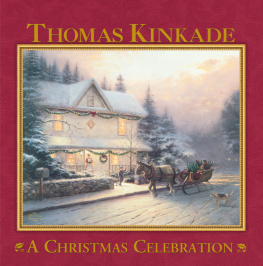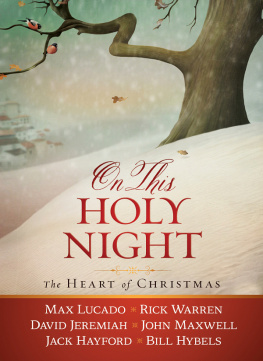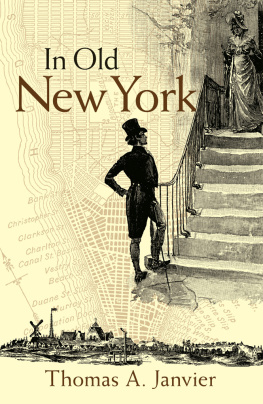The Christmas Kalends
of Provence
I
Fancy you've journeyed down the Rhne,
Fancy you've passed Vienne, Valence,
Fancy you've skirted Avignon
And so are come en pleine Provence.
Fancy a mistral cutting keen
Across the sunlit wintry fields,
Fancy brown vines, and olives green,
And blustered, swaying, cypress shields.
Fancy a widely opened door,
Fancy an eager outstretched hand,
Fancynor need you ask for more
A heart-sped welcome to our land.
Fancy the peal of Christmas chimes,
Fancy that some long-buried year
Is born again of ancient times
And in Provence take Christmas cheer!
In my own case, this journey and this welcome were not fancies but realities. I had come to keep Christmas with my old friend Monsieur de Vilmur according to the traditional Provenal rites and ceremonies in his own entirely Provenal home: an ancient dwelling which stands high up on the westward slope of the Alpilles, overlooking Arles and Tarascon and within sight of Avignon, near the Rhne margin of Provence.
The Vidamesuch is Monsieur de Vilmur's ancient title: dating from the vigorous days when every proper bishop, himself not averse to taking a breather with sword and battle-axe should fighting matters become serious, had his vice dominus to lead his forces in the fieldis an old-school country gentleman who is amiably at odds with modern times. While tolerant of those who have yielded to the new order, he himself is a great stickler for the preservation of antique forms and ceremonies: sometimes, indeed, pushing his fancies to lengths that fairly would lay him open to the charge of whimsicality, were not even the most extravagant of his crotchets touched and mellowed by his natural goodness of heart. In the earlier stages of our acquaintance I was disposed to regard him as an eccentric; but a wider knowledge of Provenal matters has convinced me that he is a type. Under his genial guidance it has been my privilege to see much of the inner life of the Provenaux, and his explanations have enabled me to understand what I have seen: the Vidame being of an antiquarian and bookish temper, and never better pleased than when I set him to rummaging in his memory or his library for the information which I require to make clear to me some curious phase of Provenal manners or ways.
The Chteau de Vilmur has remained so intimately a part of the Middle Ages that the subtle essence of that romantic period still pervades it, and gives to all that goes on there a quaintly archaic tone. The donjon, a prodigiously strong square tower dating from the twelfth century, partly is surrounded by a dwelling in the florid style of two hundred years backthe architectural flippancies of which have been so tousled by time and weather as to give it the look of an old beau caught unawares by age and grizzled in the midst of his affected youth.
In the rear of these oddly coupled structures is a farm-house with a dependent rambling collection of farm-buildings; the whole enclosing a large open court to which access is had by a vaulted passage-way, that on occasion may be closed by a double set of ancient iron-clamped doors. As the few exterior windows of the farm-house are grated heavily, and as from each of the rear corners of the square there projects a crusty tourelle from which a raking fire could be kept up along the walls, the place has quite the air of a testy little fortressand a fortress it was meant to be when it was built three hundred years and more ago (the date, 1561, is carved on the keystone of the arched entrance) in the time of the religious wars.
But now the iron-clamped doors stand open on rusty hinges, and the court-yard has that look of placid cheerfulness which goes with the varied peaceful activities of farm labour and farm life. Chickens and ducks wander about it chattering complacently, an aged goat of a melancholy humour stands usually in one corner lost in misanthropic thought, and a great flock of extraordinarily tame pigeons flutters back and forth between the stone dove-cote rising in a square tower above the farm-house and the farm well.
AT THE WELL
This wellenclosed in a stone well-house surmounted by a very ancient crucifixis in the centre of the court-yard, and it also is the centre of a little domestic world. To its kerb come the farm animals three times daily; while as frequently, though less regularly, most of the members of the two households come there too; and there do the humansnotably, I have observed, if they be of different sexesfind it convenient to rest for a while together and take a dish of friendly talk. From the low-toned chattering and the soft laughter that I have heard now and then of an evening I have inferred that these nominally chance encounters are not confined wholly to the day.
By simple machinery (of which the motive-power is an aged patient horse, who is started and left then to his own devices; and who works quite honestly, save that now and then he stops in his round and indulges himself in a little doze) the well-water is raised continuously into a long stone trough. Thence the overflow is led away to irrigate the garden of the Chteau: an old-fashioned garden, on a slope declining southward and westward, abounding in balustraded terraces and stone benches stiffly ornate, and having here and there stone nymphs and goddesses over which in summer climbing roses kindly (and discreetly) throw a blushing veil.
The dependent estate is a large one: lying partly on the flanks of the Alpilles, and extending far outward from the base of the range over the level region where the Rhne valley widens and merges into the valley of the Durance. On its highest slopes are straggling rows of almond trees, which in the early spring time belt the grey mountains with a broad girdle of delicate pink blossoms; a little lower are terraced olive-orchards, a pale shimmering green the year roundthe olive continuously casting and renewing its leaves; and the lowest level, the wide fertile plain, is given over to vineyards and wheat-fields and fields of vegetables (grown for the Paris market), broken by plantations of fruit-trees and by the long lines of green-black cypress which run due east and west across the landscape and shield the tender growing things from the north wind, the mistral.









